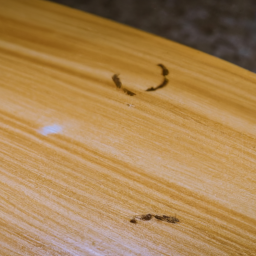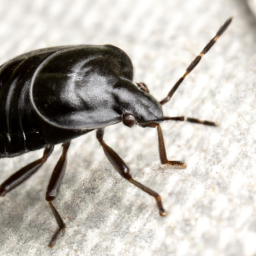Sand fleas
Sand Fleas – The Tiny But Troublesome Parasites
Sand fleas, also known as beach fleas or punkies, are tiny, red parasites that are crafty assailants to humans, pets, sea birds, and mammals living along the most stunning beaches in the world.
Appearance and Characteristics
Sand fleas are often smaller than a grain of rice, and they have a “tail” that is over twice their body length, making them look like a segmented worm. As they burrow through the layers of sand, they can flee quickly and make great swimmers. The most common variety is the beach fleas, which tend to move about the grains of sand in search of their prey.
Diet and Habits
Sand fleas feast on:
-
- Blood from their hosts (humans and marine life)
-
- Rotting organic matter
-
- Small invertebrates
-
- Fish eggs
These opportunistic parasites favor the warm, humid and shaded areas near the shoreline and nest in the sand, where they attack their prey. During the night, they’re most active, ready to launch their attack. When disturbed, sand fleas may suddenly leap into the air or swim quickly away.
Human Bite
Sand fleas are notorious biters and can leave painful, itchy welts on people. This can especially be an issue if you are standing in areas they inhabit when they start to get active. In some cases, due to an allergic reaction, these bites can become larger, leaving a permanent scar that sometimes requires medical attention.
What to Do If Bitten
If you get bitten by a sand flea, here are some tips on how to “battle” the discomfort:
-
- Apply Echinacea – This plant-based remedy is known to reduce the burning sensation from bug bites and can also help prevent infection.
-
- Try Tea Tree Oil – This essential oil helps reduce swelling and itching with its anti-inflammatory properties.
-
- Use cold compresses – Applying a cold compress or an ice pack can immediately reduce the sting and inflammation.
To help prevent sand fleas from entering your home, be sure to vacuum or mop regularly and help keep the house free of fleas by using flea traps, borax powder, and other insecticides. If you’re planning a beach holiday, make sure to use long-sleeved shirts, insect repellent, and long shorts.
Sand fleas, otherwise known as jiggers or beach fleas, are a type of parasitic insects that can live in sand and soil. They feed on the skin, nails, and hair of animals, including humans, and are a nuisance that can cause a lot of itching and annoyance.
Sand fleas are found in warm, sandy areas like beaches, but they can also occur in other dry environments such as deserts, dry grassland, and even in damp parts of a home. They’re normally seen on cats, dogs, and other mammals, but they can also affect humans.
Sand fleas are known to cause moderate to severe itching and inflammation, but they can also create a range of other issues including skin infections, fungal infections, secondary bacterial infections, and even tapeworms. In humans, the most common symptom is an itchy red rash, which can be quite painful.
Sand fleas can be eliminated by regular vacuuming, frequent changes in bedding, and good hygiene practices. If you think you’ve been affected by sand fleas, it’s important to speak with a physician or dermatologist, who can diagnose the issue and recommend a course of treatment.
If you’re spending time at a beach or other sandy area, it’s important to be mindful of sand fleas. Wear pants and closed-toe shoes and avoid wading in the water or walking through the sand where the fleas could be lurking. Use insect repellent, too, and if you notice a red rash or any other suspicious symptoms, be sure to seek medical help right away.
Also Read: Best Mouse Poison that Kills without Smell
Related: Dust Mites in Bed Symptoms
Related: Can Bed Bugs Live on Wood Furniture?
Related: Top 7 Pictures of Sand Flea Bites!
Related: Chiggers vs Oak Mites – in 5 Important Points Explained!
Related: 7 Best OTC Flea Treatment for Dogs
Related: Gnat Bite vs Bed Bug Bite – in 5 Important Points Explained!







